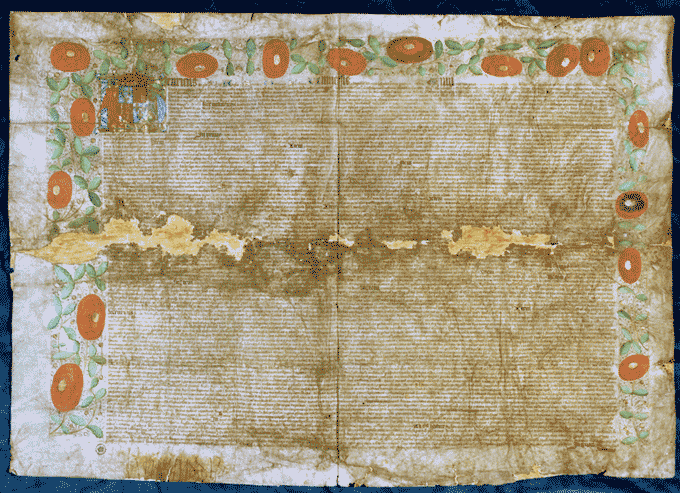| | Home | Resources | Schools Programme | Teachers | Site help | About us | Contact us | |
| You are here: Home > Resources > Flodden, 1513 > Scotland's relations with England |
Scotland's relations with England
Relations between Scotland and England were difficult throughout the 15th century with both countries either attacking one another across the border or negotiating truces that never lasted. In 1460 James II freed Roxburgh Castle from English occupation. In 1474, James III proposed the marriage of his son to a member of the English royal family but this plan failed. In 1480 Edward IV invaded Scotland. When James IV was crowned king of Scotland 1488, Henry VII was king of England. Henry had survived the Wars of the Roses between the rival Lancaster and York families to take control of the throne but he continued to face revolts from other claimants, including Perkin Warbeck. James took advantage of this situation and invaded England in 1496 and 1497. In November 1501, Henry formed an alliance with Spain through the marriage of his eldest son, Arthur, to Catherine of Aragon, the daughter of King Ferdinand. He started lengthy negotiations with James to bring an end to hostilities and form a political alliance between Scotland and England. In 1502, they agreed a peace treaty based on the marriage of James to Margaret Tudor, Henry’s elder daughter. When the royal marriage was arranged, Henry and James put their signatures to the Treaty of Perpetual Peace. To give the alliance extra importance, a clause was included that threatened excommunication from the church if either party should break the peace. Pope Alexander V issued a papal bull (a formal order issued by the head of the Roman Catholic Church) to this effect on 28 May 1503. Each party produced a very elaborate document agreeing to the terms. The document shown, decorated with roses, is the English ratification of the treaty, signed by Henry at Westminster on 31 October 1502. It was delivered into the hands of the Scottish court and survives today in the National Records of Scotland in Edinburgh. James signed the Scottish version of the treaty, decorated with thistles, on 17 December 1502. It was delivered into the hands of the English court and survives today in the National Archives in London. The treaty promised everlasting peace between the two countries, the first effective lull after 200 years of intermittent warfare. The wedding took place in August 1503 at a sumptuous ceremony at Holyrood Abbey. Margaret was 13 and James 30. She brought with her a dowry of 30,000 golden nobles (£10,000). The marriage was heralded as the union of the thistle and the rose, bringing the two royal families together. William Dunbar, the Scottish court poet, born around 1460, wrote his poem, The Thrissil and the Rois, in celebration of the marriage. |
The Treaty of Perpetual Peace, 1502
(National Records of Scotland reference: SP6/31) Transcript of extract… keeping in view the bond and amity, truce, friendship and alliance which presently exists between our most illustrious princes… and also the marriage to be contracted before Candlemas next, we will… that there be a true, sincere, whole and unbroken peace, friendship, league and alliance… from this day forth in all times to come, between them and their heirs and lawful successors…
(A Source Book of Scottish History, Vol II, edited by WC Dickinson, G Donaldson, I A Milne, 1953, p. 59-61) |
|
|